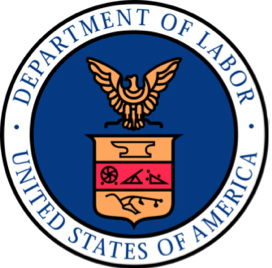The fatal injury rate remains unchanged at 3.5 per 100,000 full-time workers, but this is the fourth time in the last five years that fatal workplace injuries have increased.
The most frequent types of workplace injuries
Transportation incidents are still the most common type of fatal workplace injury because of the dangers surrounding the size and weight of the vehicles being used. Compared to a semi-truck, which is 25-times the size of a passenger vehicle, excavators at construction sites can weight up to 188,716 pounds. Transportation incidents accounted for 40% of all work-related fatalities.
Violent events, including those caused by other people or animals, were the second most frequent type of fatal workplace event. According to the CFOI report, violent deaths increased by 3% in 2018 because of the 11% increase in work-related suicides.
Incidents involving contact with equipment have increased by 13%, and incidents involving workers being struck by falling objects or equipment have increased by 17%. While fatal falls, slips, and trips remain some of the most common causes of work-related deaths, these incidents have fortunately declined by 11%.
Rising workplace fatalities must be met with standards
Although 72% of businesses say that improving customer experience is their number one priority, experts say it's just as important for businesses to take an active role in improving their workplace safety standards. The American Society of Safety Professionals (ASSP) is urging U.S. employers to be more proactive about safety standards and systems after the CFOI report was released.
"With the innovative tools available to today's employers nationwide, it's concerning that we're continuing to see higher numbers of worker fatalities," said ASSP President Diana Stegall. "Most occupational incidents are preventable given today's technologies and proven safety and health strategies."
Just recently, an investigation by the National Transportation Safety Board (NTSB) into the gas pipeline explosion and fire in Alabama that killed two workers and injured four others in 2016 found that the probable cause of the explosion the excavation crew's inadequate communication, coordination, planning, and failure to adhere to company policy.
The ASSP is recommending that employers implement safety and health management systems alongside voluntary consensus standards to combat rising fatal workplace injuries caused by incidents like the gas pipeline explosion.
Operating under voluntary consensus standards
The Occupational Safety and Health Administration (OSHA) sets workplace safety standards that are mandated by law. Likewise, the Americans with Disability Act (ADA) provides reasonable accommodations for disabled employees as mandated by law.
But voluntary consensus standards are guidelines followed by organizations because of their merit. Consensus standards represent state-of-the-art practices like recycling 100% of the unused material in manufacturing and addressing gaps in regulatory standard practices.
"Voluntary national consensus standards can transform safety programs from compliance-based cost centers to corporate sustainability initiatives that save lives and positively impact the organization's bottom line," said Stegall.
By following not only law-mandated workplace safety standards but also voluntary consensus standards, businesses in the U.S. can reduce the number of fatal workplace injuries, nonfatal workplace injuries, and illnesses.













